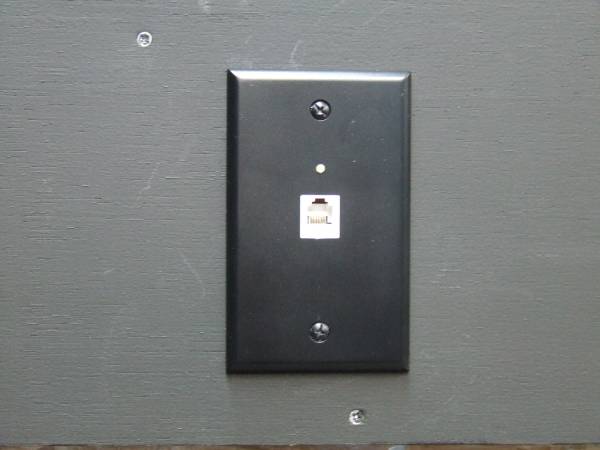The GC&SF was originally built in a spare bedroom in my house, but in the mid 1990's Brett the Builder built a train room for me. With help from Greg the GC&SF was moved from the bedroom to the new train room, and we added some extra track sections to increase the running distance. This version of the layout was never pretty though as it was always planned to be replaced.
The last parts of the old layout were demolished in 2003, and work started on the new layout. Here's Rodney installing some of the framework:
Actually, I exagerate somewhat, as construction of the current GC&SF started before the old layout was demolished, with the building of the south-end staging yard (representing points in Texas), and the towns of Ardmore and Gene Autry. Unfortunately I didn't get any good pics of those locations at that time.
The first section built following removal of the old layout was the north-end staging yard, which represents points in Kansas and Illinois, and is hidden below the town of Pauls Valley. Another hidden track allows continuous running between the visible 'ends' of the layout.
People sometimes ask me about the hidden north-end staging, and these are the best pics I have to show how it was constructed. First, here is where the continuous run track (which hosts two hidden staging sidings of its own) separates from the mainline to staging, and continues on to rejoin the mainline "south" of Ardmore:
The control panel set in the fascia in the distance is used to reverse trains in the south-end staging.
This photo shows the approach end of the north-end staging yard, which connects to the track at the bottom of the photo above.
This is the reversing loop end, which is used to turn trains so they can leave staging. The module is my old N-trak module.
This last photo from 2003 shows the original track arrangement at Ardmore, on the left, and the benchwork being constructed above the north-end staging in the distance.
In early 2004 I installed plywood over the north-end staging and continuous running tracks, and then used old code 80 track recovered from the old layout to temporarilly connect up the north-end staging yards to the towns of Ardmore and Gene Autry. I also added a rudimentary Pauls Valley, to add some switching capability.































